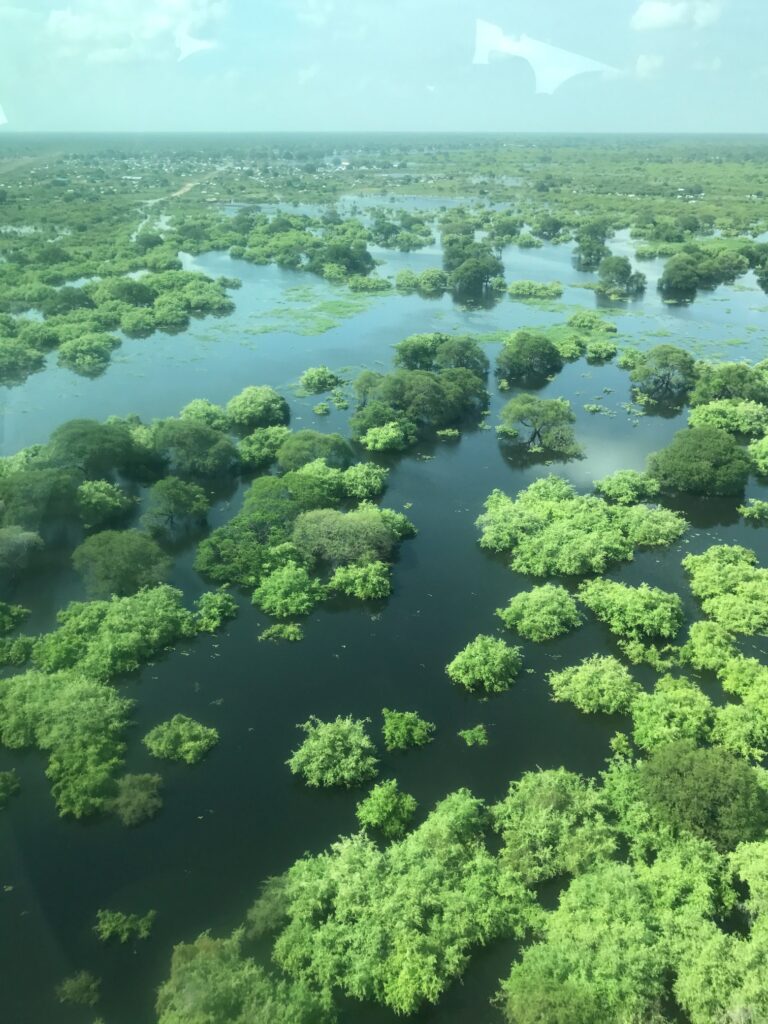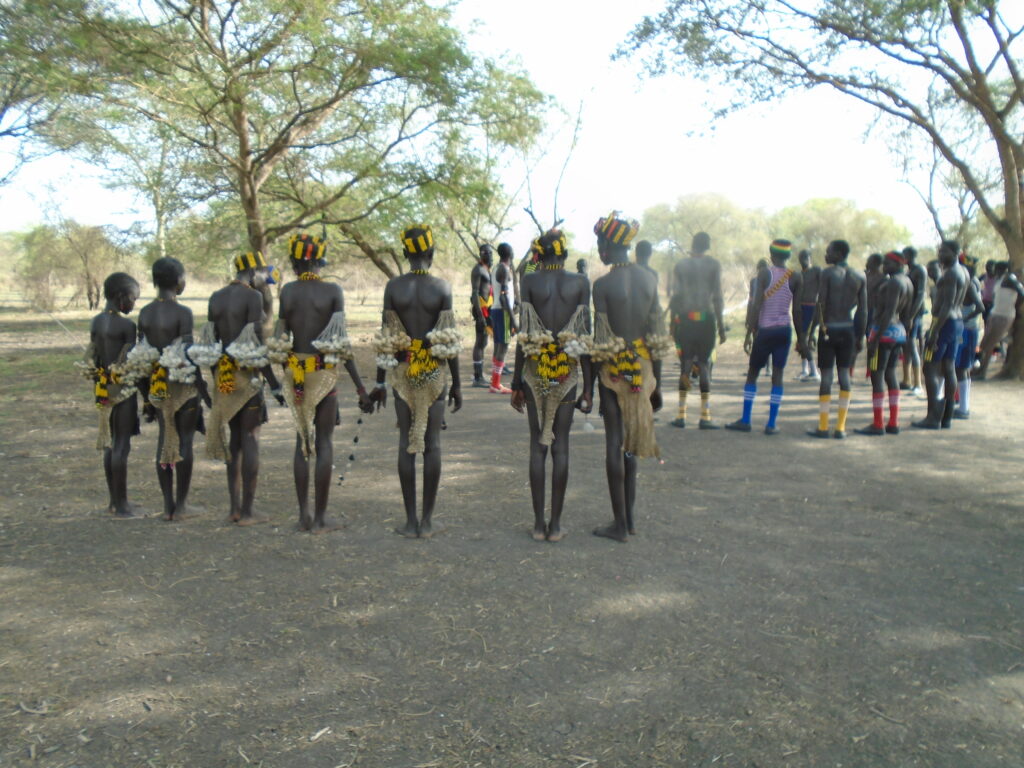The purpose of this website is to showcase and promote the wealth of Murle tangible and intangible cultural heritage. It is a place for learning and for conversations about Murle cultural heritage, its richness, diversity, fluidity and changes occurring.
Overview
Murle cultural heritage is vibrant, rich and powerful. Based on the belief that culture plays an essential role in generating mutual understanding and is a resource for nation-building, this platform aims to contribute to more public information on the wealth of Murle tangible and intangible cultural heritage. By doing so, it hopes to offer context, knowledge and alternative perspectives, and counter the stigmatisation of the Murle community in South Sudan. It is an accessible space to learn more about the Murle community and its cultural heritage, and also a space for Murle individuals to publish.
The website emerged out of discussions between Diana Felix da Costa, an academic with a long-term interest in Greater Pibor, Helen Lukurynyang, an MP in South Sudan’s National Parliament, and Joseph Lilimoy, an educator and active member of the community, who thought such a platform could offer an easily accessible space to document, learn and discuss Murle heritage and the potential role it can play in contributing to generate a better understanding of the Murle community in South Sudan and beyond its borders. Subsequently, consultations on the website were carried out among community representatives in South Sudan and diaspora and the initiative was endorsed by community leaders and by a large number of Murle intellectuals. The hope is that the website will be fed by different voices and by individuals interested in contributing posts and sharing their knowledge.
According to UNESCO, intangible cultural heritage goes well beyond cultural monuments and objects. Rather, it includes inherited traditions or living expressions passed on along generations, such as oral traditions, performing arts, social practices, rituals, festive events, knowledge and practices concerning nature and the universe or the knowledge and skills to produce traditional crafts. Intangible cultural heritage is dynamic and alive, responsive to the world around. It is made by and of people, and thus, is ever-changing and adaptive.
While engaging and documenting different aspects of Murle intangible cultural heritage, this website takes the Murle age-sets as the entry point to discuss Murle intangible culture and heritage, documenting and showcasing performing arts including song, dance and music, cultural practices and objects around the age-sets.
The Murle age-sets remain one of the most important social features in the community. Sometimes called generations, age-sets (buul in Murle language) are social groupings primarily for men within a certain age bracket for which one will usually belong all his life. Age-sets are a defining social structure among the Murle community and a source of unity, social solidarity and support.
As per UNESCO’s definition of intangible cultural heritage, the website also showcases Murle oral traditions and expressions including proverbs, tales and myths; craftmanship and other significant cultural objects; as well as other relevant social dimensions that may come up.
This website is also a platform to reflect on changing cultural practices. The website focuses exclusively on culture and does not get involved in politics, neither internal nor external politics. The website is not for profit in any way.
Advisory Board and contributors
This initiative is spearheaded by Dr Diana Felix da Costa, alongside Honourable Helen Lukurynyang and Honourable Joseph Lilimoy.
Dr Diana Felix da Costa, a British Academy Postdoctoral Fellow in the School of Arts at the School of Oriental and African Studies (SOAS), University of London in the UK, has been learning about Murle culture and heritage since 2011 when she carried out her doctoral research in Boma and Pibor and was awarded her PhD from SOAS in 2017. An advisory board composed of the following individuals guides the direction of the website:
- Honourable Helen Lokurynyang, Member of National Parliament representing the GPAA
- Honourable Joseph Lilimoy, educator
- John Boloch Kumen, civil society activist
- Reverend James Aleyi, religious leader
- Anna Rowett, Head of South Sudan Office, Rift Valley Institute
- Rebecca Lorins, Likikiri Collective South Sudan
Website contributions and posts are prepared by the website team: Diana Felix da Costa, John Boloch Kumen, Johnson Kengen and Lauryen Oleyo. We strongly encourage and invite contributions by individuals who wish to publish their reflections and knowledge on Murle cultural heritage. Please get in touch with us through the website contact page or by email to discuss your ideas. These can be uploaded by the website team.
The wider project and funding support
The website is part of a wider research project awarded to Diana Felix da Costa by the British Academy (2020-2024). The research project investigates the popular ‘youth in crisis’ narrative by examining visual, musical and performative culture as the angle through which to better understand young people’s hopes, aspirations, concerns and frustrations. The research examines how the younger Murle age-sets have been adapting to the context of political conflicts and subsequent displacement, and how in turn, these are actively re-shaping traditional inter-generational and gender roles and relations.
In the context of the ‘youth in crisis’ debate, the project acknowledges age-sets not as archaic socio-political structures, but as contemporary forces adaptive to changes and creatively shaping traditional generational and gender roles and relations. The research project investigates positions of ‘youth’ in society, not as a discrete social category but embedded in family and community relations and expectations, to show how despite external pressures connected to violent conflict and displacement, young people remain responsive to family values and community norms.



